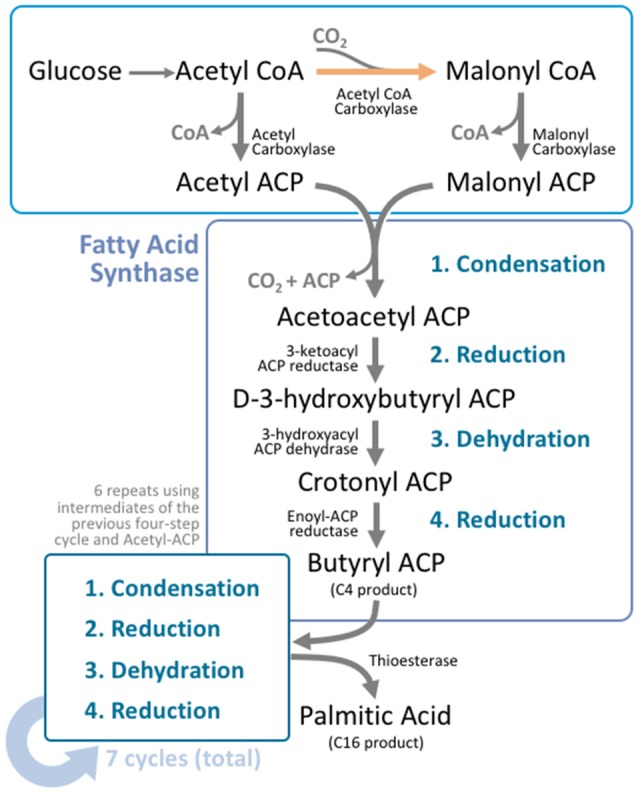Figure 2.

Fatty acid synthesis is a cyclical process that utilizes a unique multifunctional enzyme complex. Glucose is metabolized to acetyl CoA through the standard glucose metabolic pathway. Acetyl CoA is then carboxylated by acetyl CoA carboxylase (ACC) to form malonyl CoA. This carboxylation step is the rate limiting process in fatty acid synthesis. Malonyl CoA and unreacted acetyl CoA undergo transacylation to form malonyl ACP and acetyl ACP respectively. These intermediates enter fatty acid synthase (FAS), where four reactions take place; condensation, reduction, dehydration, and a second reduction. The four reactions add two carbons to the original carbon chain—in this case malonyl ACP. In humans, this cycle is typically repeated six more times, using the product from the end of the cycle as the input molecules for the next cycle, producing palmitoyl ACP; a 16 carbon product. A thioesterase enzyme then terminates the carbon chain at the thioester bond, forming palmitic acid.
